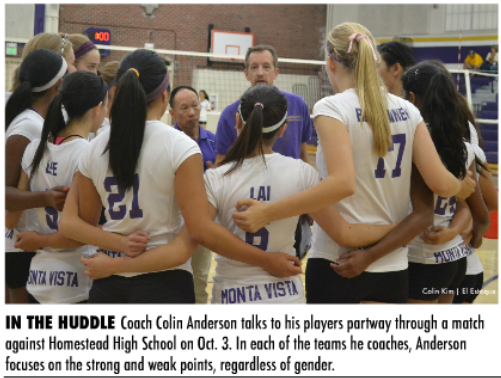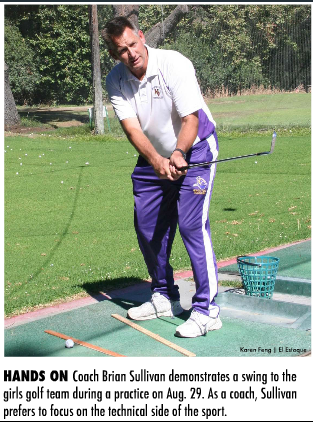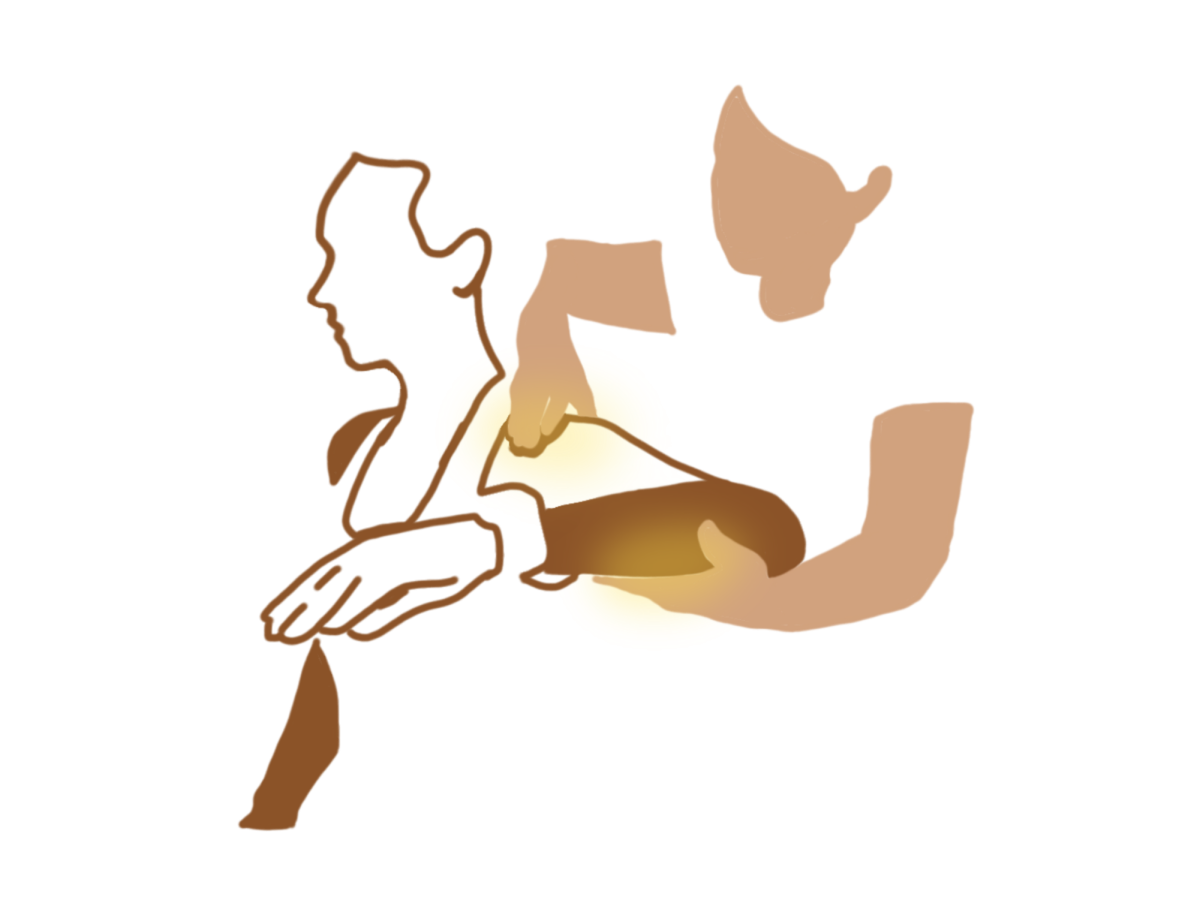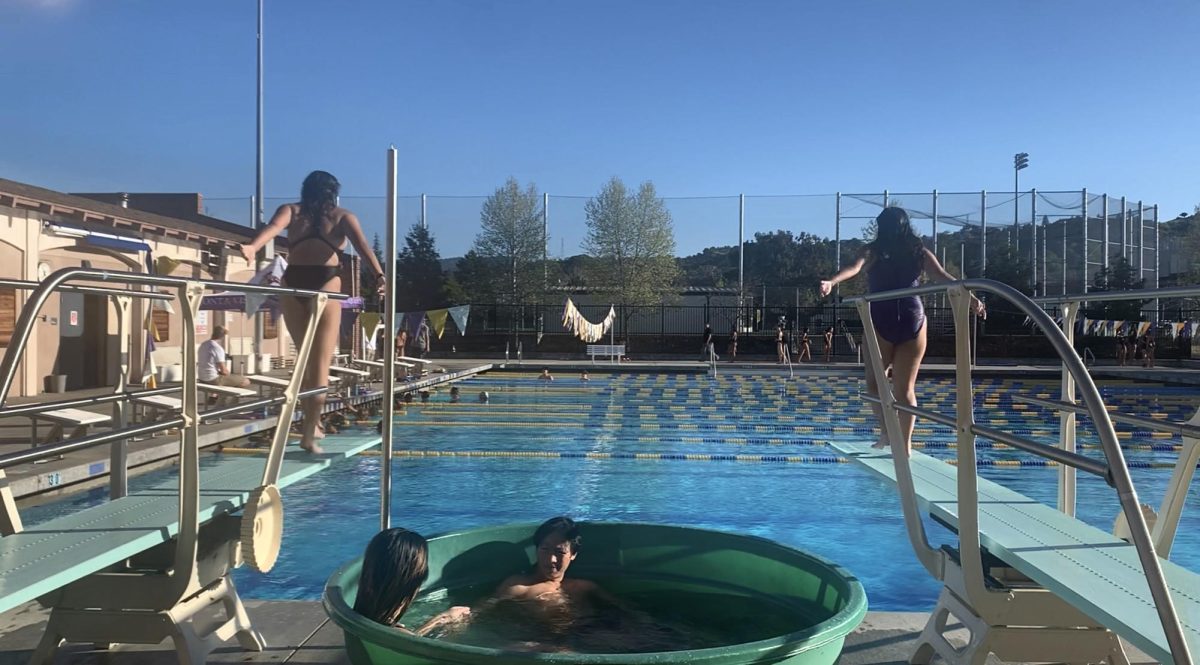Underlying factors define the dynamics of cross gender coaching.
As the girls basketball team underclassmen scramble to put the finishing touches on posters to commemorate their graduating seniors, multi-team coach and physical education teacher Brian Sullivan watches patiently. For his teams, he leaves all the senior night traditions to the players. Dressed in their personalized team warm-ups, little quirks like this are just some of the few things that differentiate girls sports teams from boys sports teams.
“The girls want everything to be perfect,” Sullivan said. “They want to design their sweatshirts and the guys are like, ‘Just give me a piece of cloth.’”
In any sport, the overall success of a team may be attributed to a healthy coach-athlete relationship in which both entities work toward a common goal. On a deeper level, however, gender dynamics can have a major impact on how a team performs during a particular season.
Girls volleyball co-captains seniors Alice Liu and Beverly Yu were at home, playing their last game of the season against Los Altos High School on Nov. 7. They had won their Senior Night game against Milpitas High School on Nov. 5, but the game underway wasn’t progressing as well as they had hoped. Despite their loss that night, head coach Colin Anderson served as a strong male presence on the field. Anderson was not new to cross gender coaching –– he had been coaching girls volleyball for the past 12 years. He recognized that each team has its own strengths and weaknesses, and according to Yu, at the end of the day, Anderson was proud of the girls because the athletes demonstrated the will to improve.
According to Anderson and Sullivan, the dynamics of cross gender coaching depend on a wide array of factors, ranging from not only the sport and age level of the athletes, but also the mindset of the athletes and the goals they set.
Anderson observes that there is a definite trend in high school and college sports that favors male to female cross gender coaching rather than female to male.This one-sided trend is apparent within the MVHS athletics department as well. An inventory of all sports teams and their coaches for the 2013-2014 school year reveals that there are no female coaches who coach an all-boys team while seven male coaches coach girls varsity teams.
In fact, cross gender coaching tends to be a controversial subject on the national scale on account of the fact that females coaching male athletics is much more rare than males coaching female athletes.
In 2010, Biology and Environmental Science teacher Natalie Rudolph at Coolidge High School in Coolidge, Az became the third ever female head coach of a male high school football team in the nation. According to an article in The Washington Post, Rudolph built up a strong track record during her time as an assistant coach for H.D. Woodson High School’s football team in D.C. After coaching CHS for four seasons, however, Rudolph resigned, citing, “[Coaching] takes up a lot of time. I’m focused on family … and focused on handling a lot of my own personal business.”
According to an article in USA Today, Patrick Nero, former chairman for the NCAA Committee on Women’s Athletics, believes that there are certain pressures that come with male and female coaching. Particularly, female coaches of college teams find it very hard to balance their work lives and family lives as coaching a team requires constant relocation and traveling.
Nero’s theory about coaching being a greater investment for female coaches may explain why male coaches outnumber female coaches at MVHS. Although both male and female coaches at MVHS work alternative full-time jobs, according to varsity girls basketball head coach Sara Borelli, female coaches may find it hard to balance family with work, and convince the team that they know enough about the game to coach.
“I think [the disparity] is because women have traditionally had to defend themselves in regard to knowing the sport and knowing the sport well,” Borelli said. “A female coach with a family only works when the husband adopts the caregiver role.”
Sullivan’s Perspective
 According to Sullivan, “coaching is still a male-dominated occupation,” whether it be within male or female sports. Based on his 30 years of coaching experience, Sullivan believes that coaching female athletes is a completely different system –– more notably on the JV side. He contends that at the JV level, female and male athletes have a different approach when it comes to learning a sport. He attributes this to the distinct adolescent mindsets of different genders.
According to Sullivan, “coaching is still a male-dominated occupation,” whether it be within male or female sports. Based on his 30 years of coaching experience, Sullivan believes that coaching female athletes is a completely different system –– more notably on the JV side. He contends that at the JV level, female and male athletes have a different approach when it comes to learning a sport. He attributes this to the distinct adolescent mindsets of different genders.
“The girls are more willing to learn in this age group,” Sullivan said. “They still want to learn techniques, want to work on shooting mechanics a lot more than game strategy, whereas the boys have been playing for many years and think they know it all. The girls are more willing to absorb information.”
Sullivan enjoys training JV athletes –– boys and girls –– because as a coach, he is able to focus more on imparting his knowledge about the fundamentals of the game and less on winning to go to CCS.
“It’s a nice change of pace to actually work on the nuts and bolts of the mechanics of everything and then let the game strategy hopefully take care of itself,” he said.
Since Sullivan has coached both genders, he has also observed the different personalities that come out of boys and girls teams.
“One thing I like about coaching the girls is that a half hour after the game, they’re already onto other topics,” Sullivan said. “The boys have a tendency of letting it eat at them for the next day or two. With girls, sometimes I have to remind them to think about [what] went right and wrong, but with the boys, I’m saying, ‘It’s done. It’s over with. Knock it off. It’s time to move on.’”
Both sides of the field
Senior Jacqueline K. Yee, a four-year basketball player at MVHS, has been coached by male coaches on JV and Borelli on varsity. According to Yee, Sullivan is aware that there are clear advantages and disadvantages for athletes when it comes to working with a male coach versus a female coach.
“As a boy coach, [Sullivan] felt there were boundaries he couldn’t overstep [when he was coaching girls],” Yee said. “But at the same time he knew how to push us in different ways than Borelli does. Borelli is the same gender as us, so there’s no boundaries she has to worry about. I think it helps the team dynamic a lot because she knows how to push us even harder.”
While Yee believes that a coach of the same gender may be able to better identify with and support the needs of the athletes, Yu proposes that a female coach may try to put her friendship with the players before coaching.
“I’ve worked with female [volleyball] coaches who are too shy to give honest feedback and criticism,” Yu said. “That just defeats the whole purpose.”
Yu believes that Anderson, being a coach of the opposite gender, is better able to identify and communicate the team’s weaknesses and areas for improvement. Yu recalls a time when Anderson challenged the team during a practice. What was supposed to be a straightforward 30-20-10 drill turned into a 40 minute struggle as many of the athletes were having trouble keeping the ball in the air. As punishment, every time a player dropped the ball, she would have to run the width of the gym from wall to wall.
“[Anderson] really pushed us to build our endurance and strive for perfection,” Yu said.
Moving forward
Although both athletes and their coaches agree that gender dynamics have a major influence on how effectively a coach is able to mentor a team or an individual athlete, Sullivan and Borelli agree that the respect shown within the coach-athlete relationship takes precedence over the underlying factors of which gender coach is better able to connect with the players.
“How the boys … respond to a female coach can be a tough situation,” Sullivan said. “If [the athletes] respect [their coach], they’re going to get respect in return, so that’s a difficult dynamic
that needs to be addressed with the players.”
Having coached a co-ed basketball team, made up predominantly of young boys, at the San Mateo recreation center early on during her coaching career, Borelli’s shares a similar sentiment.
“Initially it’s harder for female coaches to gain that respect,” Borelli said. “[Until] the players know that you know the game, you know the strategy, and you know and understand everything [about the game].”





















